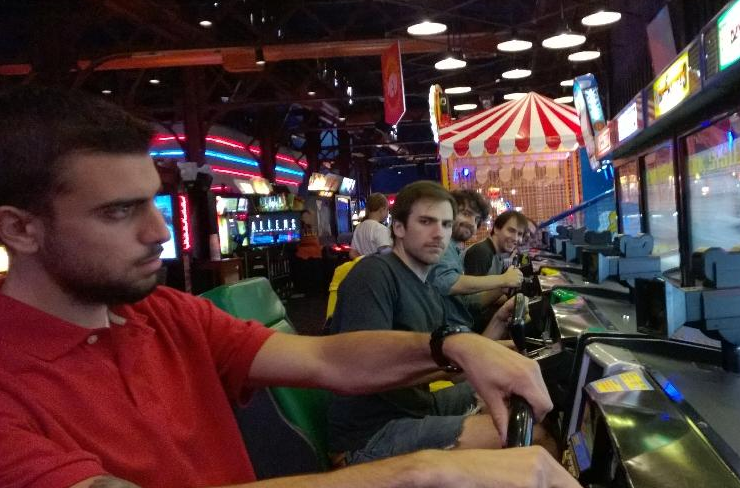Indie Dev Advice for Utilizing Latest Tech in PC & Mobile Gaming
This post is part of an ongoing series presented by the "Every Dev Has a Story" program from Microsoft where we share stories about innovators, creators, and developers doing something unique. If you’re harnessing technology in a new way or have built something great, tweet screenshots, video, or blogs of your story using the #iDevThis hashtag on Twitter.
In 2013, AAA game producer Nick Madonna became an indie game developer for PC and mobile. Filling his team with local artists and programmers that are as adept at having fun as they are at building awesome games, PHL Collective (@PHLCollective) has delivered some uniquely entertaining experiences. We caught up with Nick and one of his lead programmers, Terry DiFeliciantonia, to learn about their experience developing games with innovative technology like the Kinect. Here’s what they had to say:
What was it like developing for the Kinect specifically?
Nick Madonna, founder (NM): This was our first time using Kinect technology so we really weren’t sure what to expect. We had a really fun idea we knew we could build but there’s always periods of uncertainty when using new technology. We decided to build for Kinect during an internal game jam and we just dove right in after some research which happened to uncover how easy it would be to get Kinect up and running with Unity.
Terry DiFeliciantonio, programmer (TD): Developing for the Kinect is straightforward. The SDK works well with Unity and allows us to easily drive the skeletons of the game characters, and attach long rubbery arms to them. We can write code, and test it quickly and easily from within Unity.
What were you most excited about regarding using the Kinect?
TD: It was exciting having access to new tools and technology. It allows us to think creatively and come up with ideas for unique games that weren't previously possible with traditional inputs. There isn't really anything out there like the Kinect so it opens up a whole world of opportunities in terms of interaction and types of games.
NM: Terry absolutely nailed it. We’re a studio that likes to experiment and try different things with gameplay and technology. Each one of our games has been different than the last so it felt right adding Kinect to our portfolio.
What was a key learning your team took away from developing for the Kinect?
TD: Since it was our first time developing for the Kinect, there were a couple things we didn't account for that we had to make adjustments to. We brought our project into a lot of different events, through a variety of environments both indoors and outdoors, and it was used by a lot of different people. We learned that things like the lighting of the environment and the height and size of the players can have an effect on the Kinect's functionality.
NM: Agreed. Setting up for PAX East, Arcade at the Oval, IndieGameStand and every other event we’ve done with Kinect was a learning experience. There were so many variables and environmental factors that we didn’t take into account. PAX East might have been the most nerve wracking because it was the first time Noodle Arm Royale was being shown to that many people!
What was it like developing with an Xbox controller for Windows 8?
TD: Implementing Xbox controller support has always been a hassle-free process, especially with Unity and Windows 8. These things were pretty much built to work together seamlessly; you don't have to worry about wasting time writing lots of custom code or tracking down drivers on the web.
NM: Controller support is expected and almost necessary for most PC games these days and Microsoft has made it easy to get that up and running.
What advice do you have for developers who are experimenting with Kinect technology or Xbox controllers?
TD: Experiment! Try new things and don't be afraid to come up with ideas that are kind of weird. Technology like the Kinect opens up a lot of new opportunities for play so it's good to think outside your comfort zone a bit and be a little crazy sometimes.
[Video]
